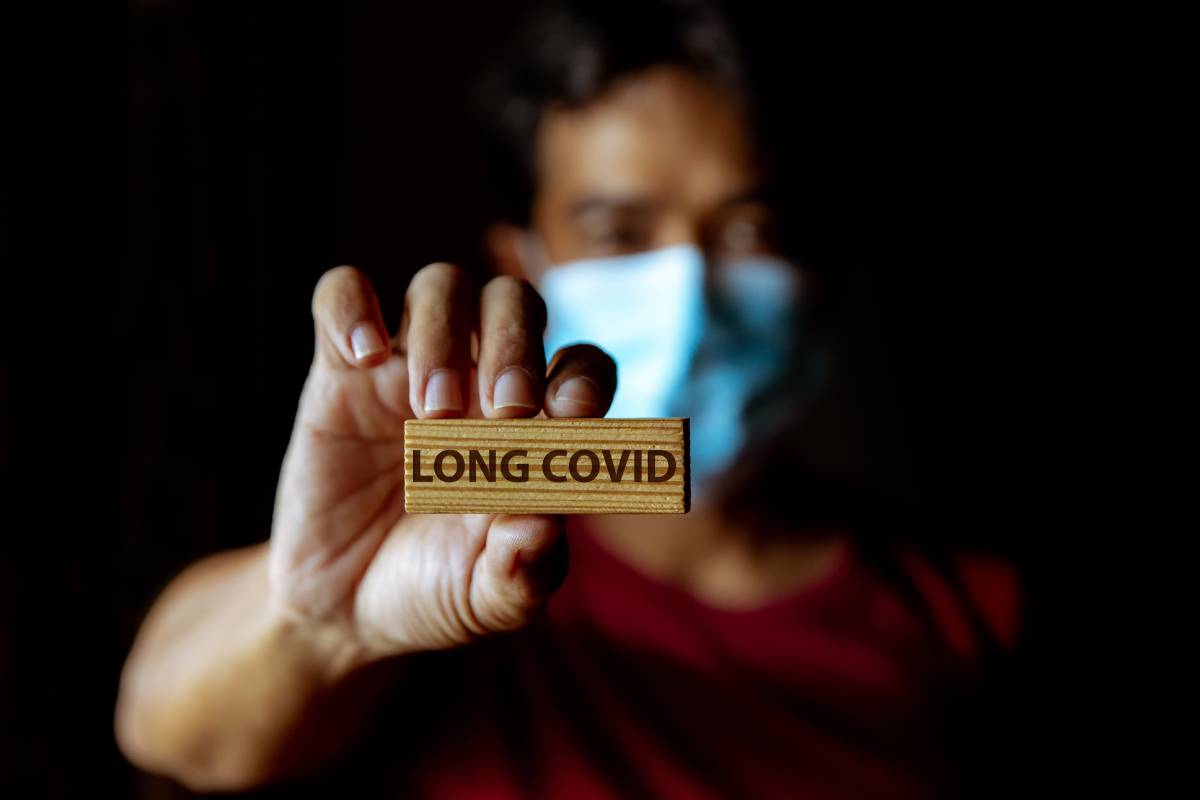Care Resources for Long COVID

Long COVID – also known as post-acute sequelae of COVID-19 (PASC), chronic COVID, and long-haul COVID – describes the enduring effects of a COVID-19 infection [1]. Medical opinion varies on how long symptoms must persist to quality as long COVID, as well as what symptoms characterize long COVID [2]. For now, it refers to a wide range of symptoms, including breathlessness, fatigue, and neurocognitive difficulties, that may outlast an initial COVID infection by weeks, months, or even years [1, 2]. There is no definitive course of care for long COVID, but there are many options that patients and providers can explore.
A preliminary course of action those who believe they have long COVID should take is to visit their primary care physician (PCP). One proposed way to structure care is by planning three consecutive PCP visits, whose dates are scheduled by referring to the patient’s initial diagnosis date [3]. This first visit, occurring around four weeks after diagnosis is for the physician to confirm the details of the patient’s COVID-19 infection and conduct tests [3]. These should include a physical examination that emphasizes the patient’s cardiorespiratory system and oropharynx, laboratory studies, and complementary tests, including a lung parenchyma evaluation [3].
Following the primary visit, a second visit should occur after the eighth week, preferably between the ninth and tenth weeks [3]. During this visit, the PCP should evaluate the patient’s test results, apply appropriate diagnostic algorithms, and strive to distinguish whether the patient’s symptoms are the cause of chronic COVID or another medical condition [3]. About three or four weeks later, a third visit should occur, during which the PCP should track the development of the patient’s symptoms and reconsider possible alternate causes motivating them [3].
Once the primary care physician has a better idea of the patient’s health profile, the PCP may refer them to more specialized forms of care. Given the variety of long COVID symptoms, treatment may range from cognitive rehabilitation to breathing exercises [4]. A primary focus should be on helping patients regain any lost endurance and strength [4]. For that reason, physical therapy and rehabilitation are important.
Long COVID can also have detrimental impacts on mental health. For one, it may exacerbate anxiety for many reasons, such as if a patient perceives a lack of recognition and support, as well as their uncertainty about their treatment and prognosis [5]. Additionally, people with previous psychological conditions have reported deterioration due to secondary consequences of COVID-19, like long-term hospitalization and isolation [3]. Accordingly, mental health resources are crucial for long COVID patients.
A consequence of the lack of consensus in the medical community concerning long COVID care has been a tendency of patients to self-manage their symptoms [2]. This has led to people taking medications like chloroquine, penicillin, and traditional medicines to assuage their symptoms [2]. Unfortunately, self-medication may result in deleterious drug-drug interactions or people taking inappropriate drugs and, as such, should be avoided as much as possible [2].
Individuals who cannot access medical care or wish for other forms of support can turn to groups like Survivor Corps and Body Politic, made up of fellow long COVID sufferers [4]. While these groups cannot substitute traditional medical treatment, they can provide people with resources instructing them on how to receive disability benefits or seek treatment [4]. Furthermore, asking one’s workplace or school for accommodations can help patients simplify their lives while awaiting sophisticated care [6].
While long COVID continues to be an active, priority area of research for the medical community, there are many resources that patients and providers can use to address the condition.
References
[1] “Long COVID or Post-COVID Conditions,” CDC, Updated May 5, 2022. [Online]. Available: https://www.cdc.gov/coronavirus/2019-ncov/long-term-effects/index.html.
[2] K. Brown et al., “Long COVID and self-management,” The Lancet, vol. 399, no. 10322, p. 22-28, January 2022. [Online]. doi:10.1016/S0140-6736(21)02798-7.
[3] A. Sisó-Almirall et al., “Long Covid-19: Proposed Primary Care Clinical Guideline for Diagnosis and Disease Management,” International Journal of Environmental Research and Public Health, vol. 18, no. 8, p. 1-20, April 2021. [Online]. doi:10.3390/ijerph18084350.
[4] K. Sheikh and P. Belluck, “What We Know About Long Covid So Far,” The New York Times, Updated May 21, 2022. [Online]. Available: https://www.nytimes.com/2022/05/21/well/long-covid-symptoms-treatment.html.
[5] N. A. Alwan, “The road to addressing Long Covid,” Science, vol. 373, no. 6554, p. 491-493, July 2021. [Online]. doi:10.1126/science.abg7113.
[6] “Caring for People with Post-COVID Conditions,” CDC, Updated March 21, 2022. [Online]. Available: https://www.cdc.gov/coronavirus/2019-ncov/long-term-effects/care-post-covid.html.
